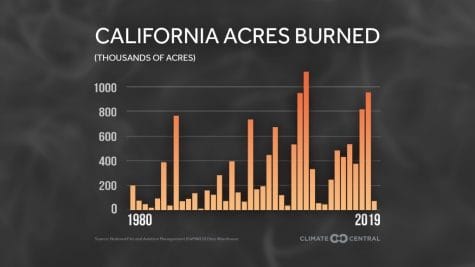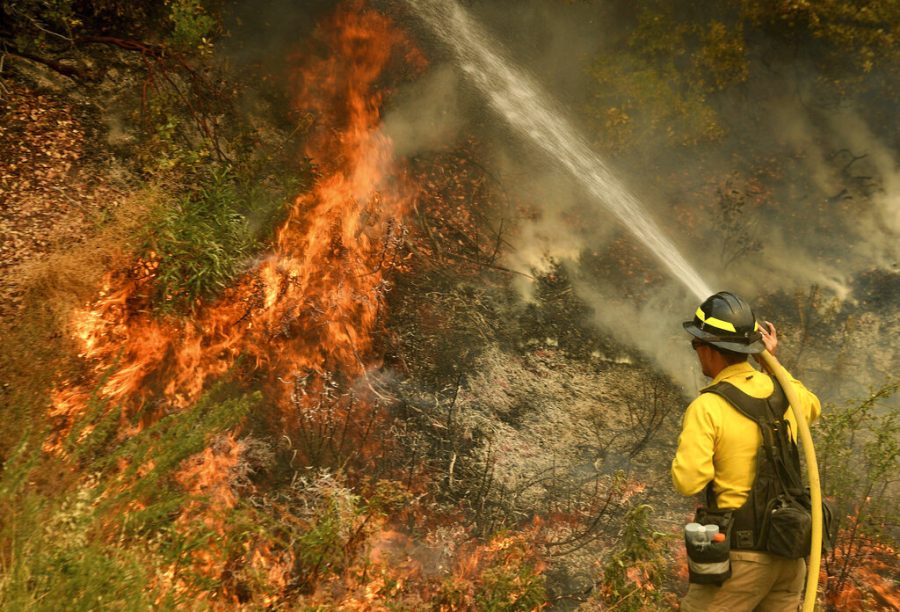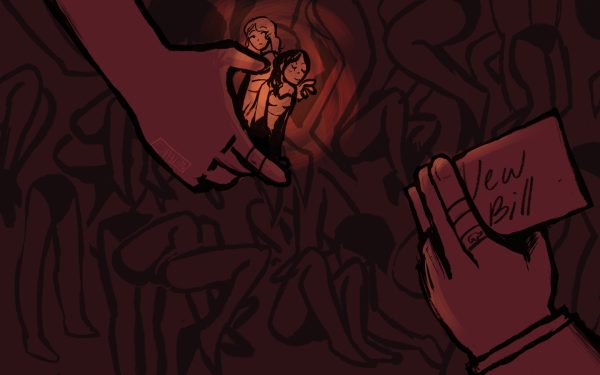California wildfires have burned over 3.2 million acres this year. Experts say climate change plays a role.
A firefighter puts out a hot spot along Highway 38 northwest of Forrest Falls, Calif., as the El Dorado Fire continues to burn Thursday afternoon, Sept. 10, 2020. The fire started by a device at a gender reveal party on Saturday. (Will Lester/The Orange County Register/SCNG via AP)
Wildfires have now burned over 3.2 million acres since the beginning of this year in California, according to a public statement from California’s Department of Forestry and Fire Protection. Twenty people have died in the wildfires and over 4,700 structures have been damaged. This year is the most severe year for wildfires in California in the past decade.
Experts said that climate change has played a role in the wildfires.
While a gender reveal party was the cause of the El Dorado Fire in Southern California, the majority of fires in Northern California, like the Creek Fire, were caused by other long-term factors, according to Dale Lockwood, global environmental sustainability professor at Colorado State University. He also said that many of the recent fires in Northern California were caused by lightning strikes.
“Land management strategies, climate change, population growth and other factors are likely contributors to the rapid spread and intensity of the fires in the western states,” Lockwood said. “Climate change is linked to the long-term drought that has left much of the west exceptionally dry. As the mean temperatures increase, the fuels in the forests and grasslands dry out more rapidly and with changing precipitation patterns caused by climate change, the land is more vulnerable to fire.”
Lockwood added that the wildfires in California this year are partially driven by climate change, which in turn has led to a more severe fire season.

The red flag warning is still active in some small portions of California due to gusty winds and low humidity, according to the state forestry department.
Climate change is making the western U.S. warmer and drier, which are conditions that increase the risk of more and larger fires, Lockwood said. Wildfires this year have broken out from the West Coast to the Rocky Mountains in west Colorado. The Cameron Peak Fire has burned over 96,000 acres in the mountains west of Fort Collins, according to the Rocky Mountain Area Coordination Center.
Lockwood said the smoke and ash along the Colorado Front Range come from California and some local fires. The air quality has been fluctuating over the last three weeks.
“In Fort Collins, we have seen several days where local sensors showed 2.5pm pollution at the unhealthy level,” Lockwood said. “This past weekend, northern Colorado was blanketed with severe smoke and ashfall from the Cameron Peak Fire that exploded in size over three days.”
Lockwood added that the Cameron Peak Fire is Larimer County’s largest wildfire ever recorded.
Jill Hopke, environmental communication expert and assistant professor of journalism at DePaul, said that the connection between wildfires and climate change is a little indirect, as we can only know climate change makes the conditions of wildfires happen more frequently. She highlighted the importance for media outlets to explain more explicitly the connection between climate change and the wildfires.
“I think journalists and media outlets play a really important role in promoting public understanding of the connections between extreme weather and climate change, so this is a point where [it’s] particularly important for [them] to do a better job at making those connections explicit and explaining the science of how climate change influences weather patterns,” Hopke said.
With tens of thousands of people being evacuated from the wildfires this year, California’s Department of Forestry and Fire Protection announced that people should be prepared now in case wildfires strike their area. Emergency kit preparation guides and some checklists to do inside and outside the house can be found on the forestry department’s website and their official Twitter account.












